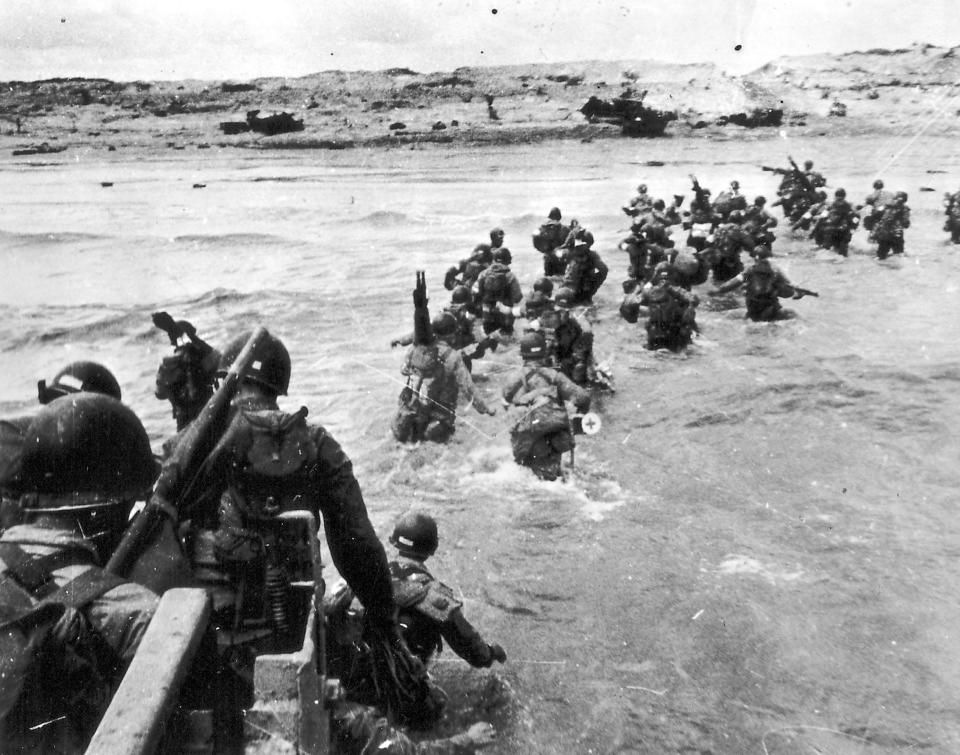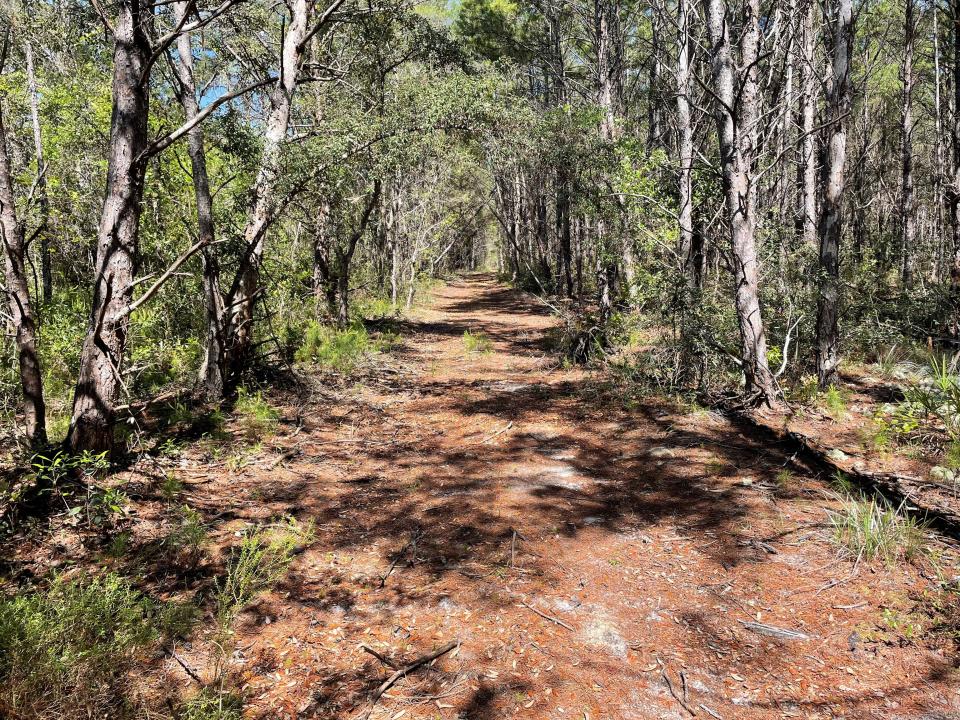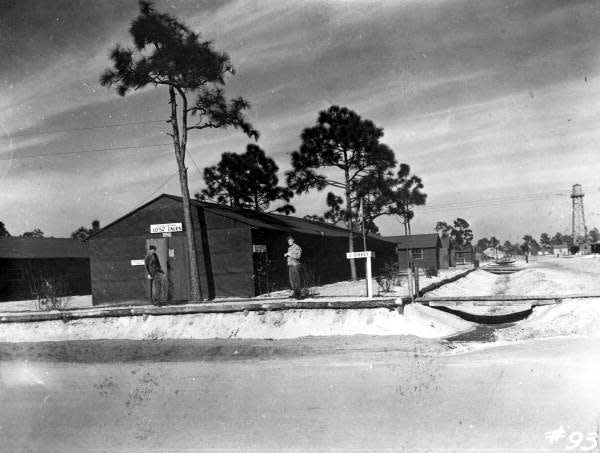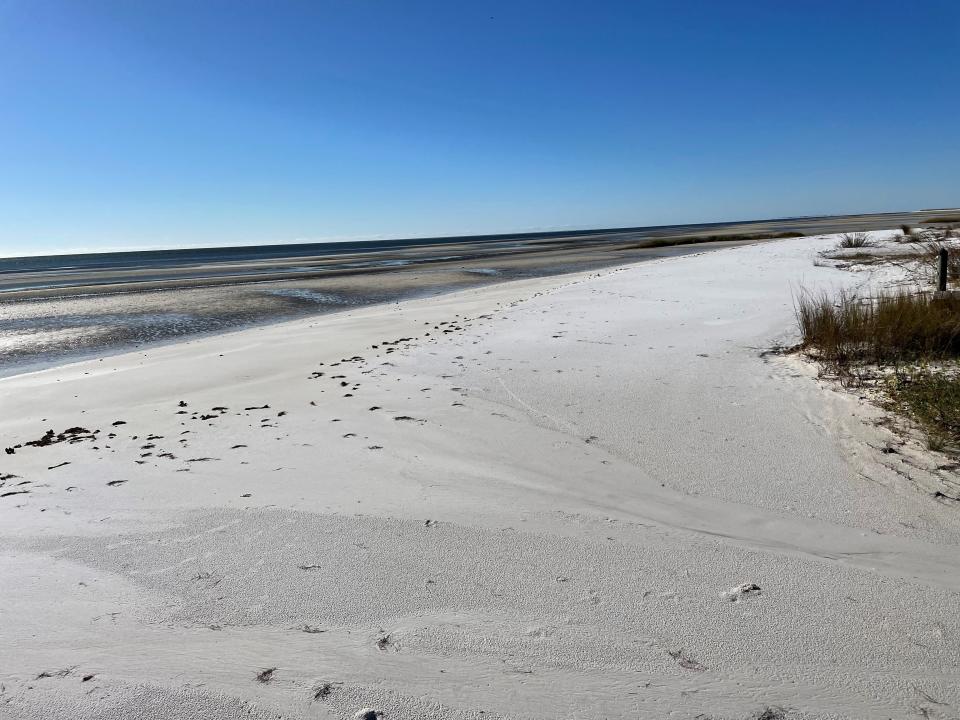When St. Teresa Beach went to war: Amphibious soldiers in Tate's Hell | David Brand
Many of the American soldiers who went ashore in France on D-Day, a scene graphically and brutally depicted in the movie “Saving Private Ryan,” were trained at Camp Gordon Johnston in Franklin County, Florida.
When the Higgins boats landed, and their ramps came down on Omaha and Utah beach, as part of Operation Overlord on June 6, 1944, a newly developed weapon stormed the beach; the Amphibious soldier. Many of these soldiers were trained in Franklin County, located south of Tallahassee. But, how and why was this area selected?

Build up to war
Germany, in their expansionism to develop the Third Reich, began attacking Great Britain with their Luftwaffe air force in July, 1940. The following September, Germany joined together with Italy and Japan to form the AXIS forces. President Franklin D. Roosevelt, clearly seeing the danger, froze all Japanese assets in the United States effectively cutting off their access to U.S. produced oil. No oil, no wheels.
World War II history: Tallahassee friends honor a father in new book, 'Brothers Born in Adversity'
Blues club: Blues beat will rumble again at another venerable Tallahassee venue
Plantation: Museum curator offers insights on Pebble Hill Plantation tours
On Dec. 7, 1941, Japanese Imperial Forces attacked Pearl Harbor sinking much of our Pacific Fleet. This was followed by attacks on Guam, Malaya, the Philippines, and other locations to establish access to oil and rubber that they needed to prosecute the war. The United States then entered the war on two fronts: Europe and Asia. Both would require waterborne landings.
In an April, 1942 report, Chief of Staff General George C. Marshall declared that the planning, preparation, and training for amphibious operations was so deficient that a combat operation would result in disaster. The report went on to recommend that the Army be charged with training for large-scale amphibious operations and the Navy assist the Army with the shipping and operation of landing craft.

Developing the amphibious training camp
In response, the Army Ground Forces Site Board examined several proposed training sites in Virginia, as well as the Everglades and Venice, Florida, before selecting Carrabelle as the Amphibious Training Center’s home. The ATC began operating on Cape Cod’s Camp Edwards in June, 1942, as a stopgap until construction of facilities were completed at Carrabelle, which was considered the Center’s home base.
Personnel had only a few weeks to prepare for the arrival of the first training unit, the 45th Infantry Division. Between July and October, 1942, both Divisions trained there.
To acquire enough land, the government purchased about 10,000 acres from landowners and leased 155,000 acres, mainly from the St. Joe Paper Company. As a side note, much of the St. Joe land was purchased by the Florida Department of Environmental Protection and is now part of the “Tate’s Hell” park at St. Teresa Beach.

While the training area was originally known as Camp Carrabelle, it officially became Camp Gordon Johnston in January, 1943, and was located in three areas: Carrabelle, Lanark Village, and St. Teresa Beach.
It was named in honor of Colonel Gordon Johnston, U.S. Calvary, who saw action in three wars and was highly decorated including the Congressional Medal of Honor. Born in 1874, he served in the Spanish-American war, led American troops during the Philippine Insurrection, and served in France during World War I.
Camp life

When soldiers learned they were going to Florida they must have envisioned palm trees swaying in gentle, balmy breezes. Instead, they encountered wild hogs, snakes, chiggers, yellow flies, and the famous Florida humidity. It was a hard scrabble place. Living conditions were basic and crude. The barracks were little more than tar paper shacks with no floors. The latrines were outside. Meals were eaten outside from their mess kits they carried in their packs.
General Omar Bradley, who would later command U.S. forces on D-Day, arrived at Camp Gordon Johnston in January, 1943. He wasn’t shy about his opinion that it was a miserable place but later admitted that the training there was invaluable. While there, General Bradley’s wife took up residence at the Wakulla Springs Lodge in nearby Wakulla County.

To make door-to-door training realistic, a mock German village called “Schickelgruber Haven” was built in the area of Harbeson City, a pulp wood and lumber harvesting town. Soldiers were trained in urban fighting there. This area was located on the Crooked River in Franklin County.
As an interesting footnote to this story, Adolf Hitler’s father was born Alois Schickelgruber but later changed his name to Alois Hitler, after the man who married his mother.
Between 1942 and 1946 approximately 250,000 men were trained in amphibious warfare at the camp. When Camp Gordon Johnston was decommissioned in 1946, it simply vanished. However, unexploded ordinance was left behind. When the St. Joe Company developed the Summercamp properties, No Trespassing signs were erected with the caveat that there may be live bombs in the ground. Army personnel searched for and cleared out any potential threats.

The beaches today
Today the area where many of the brave soldiers that invaded Europe trained has beachside neighborhoods, pristine white beaches, and a large state park. Children play in the sand where amphibious soldiers stormed ashore on training missions and hikers traipse through the park where the barracks and parade field were located.
The Camp Gordon Johnston Museum in Carrabelle, financed by private donations, educates new generations about the sacrifices the men and women who served in the military made during World War II.
David Brand, Law Enforcement Coordinator of the Florida Sheriffs Association, is an occasional guest columnist for the Tallahassee Democrat and lives in St. Teresa.

If you go
What: Special exhibit commemorating D-Day. Opening on the 79th Anniversary of D-Day, Tuesday, June 6, the exhibit will be on display through July 1. Camp Gordon Johnston trained Infantry Divisions in amphibious assault and the soldiers who trained here were put to the test on the heavily fortified beaches of Normandy, France, on D-Day, June 6, 1944 in the largest seaborne invasion in history. The Carrabelle Beach Assault video will be shown throughout the day running every 10 minutes.
Where: Camp Gordon Johnston WWII Museum at Carrabelle Beach, at 1873 Hwy 98 West, directly across from the very beach where the beach assault training occurred in 1942-1943.
Hours: The museum is open every Tuesday through Saturday from 11 a.m. to 5 p.m. There is no charge for admission, but donations are welcome. Visit campgordonjohnston.com/
This article originally appeared on Tallahassee Democrat: St. Teresa Beach was Florida's training ground for D-Day

